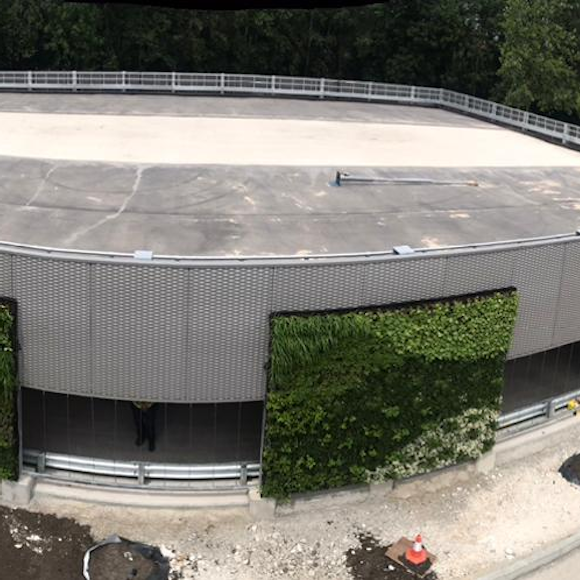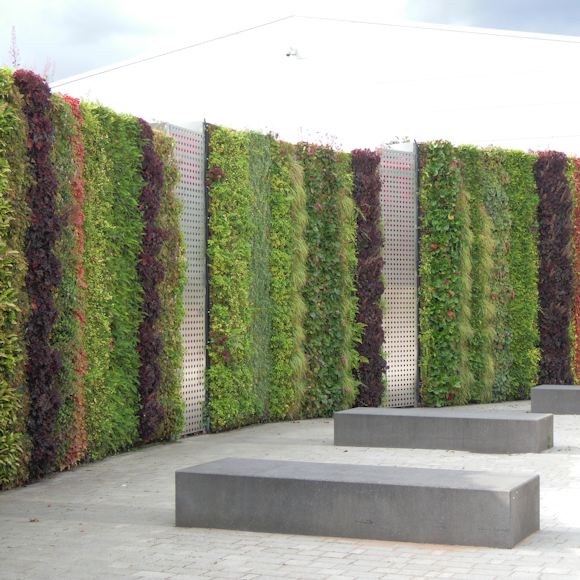Since urban greening features have become more widely acknowledged, and more specifically since COP26, questions have been raised around the efficacy of greening solutions like green walls and the environmental benefits that they claim to have. In fact, there is even a term to describe this: ‘greenwashing’.
Labelling green walls as simply greenwashing is happening more and more. But why? Is it the use of green walls in the wrong way? Or are the wrong systems being used that undermine the real value of nature-based solutions?
Let’s discuss:
- How to spot a green wall that is a ‘greenwashing’ exercise
- How to tell when a living wall is providing real environmental benefits
- How living walls can mitigate environmental issues, detailed at COP26
- How to make sure your living wall isn’t just a cosmetic solution
When are green walls greenwashing? And how do you spot it?
So when are green walls a greenwashing exercise? Here is what you should look out for:
- Plastic planting! This may seem obvious but unfortunately artificial walls are often used where budget or other factors make the use of a natural green wall more complex. These can be very realistic, where you often only realise the plants are fake upon touch. The photo below shows an artificial green wall being installed.
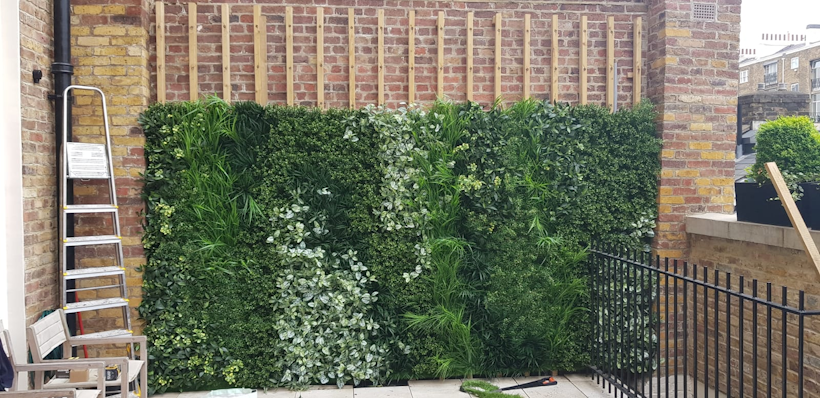
- What are the plants growing in? This is one of the most important considerations in your green wall project. Substrates that are often used that are unnatural for plants to grow in are felts, rockwool and geo-textile fabrics. But these do not cater for burrowing insects and other key parts of local ecology. Using an organic growing medium like soil is half the story to achieving maximum environmental gain. Did you know solitary bees make their home in soil? Yet you wouldn’t find them settling down in a felt fabric. A green wall may look beautiful, but take a closer look: is it really providing environmental benefits?
- Is the wall healthy? If a natural green wall is not being maintained, and therefore the soil (if being used) and plants are not in full health, they are not achieving their full potential. For example, dry or dead plants don’t provide the sugars that bees need and use, and in dry soil, earthworms can survive but are not active.
When are living walls providing real environmental benefits?
On the other hand, living walls can also mean real environmental gains. Here’s how you can tell a ‘greenwashing’ feature from a successful living wall:
- Wildlife is active. Can you see a bee enjoying the plants? Butterflies? Or a bird making its nest among the foliage (this is harder to spot though!)?
- The planting changes seasonally. When plants transform with the seasons, they provide different benefits to different insects throughout the year. A green wall that is simply evergreen and is there to provide the same coverage all year round will have its own advantages, but in terms of biodiversity, can’t be compared to a design that includes seasonal variations with flowering plants, pollinator planting and spring bulbs for example.
- Natural soil is used as the growing medium. As we’ve mentioned already, soil holds a big part of the potential for a living wall to become an environmental asset. It provides for burrowing insects, solitary bees, supports a greater variety of plants (for example you can’t have spring bulbs in a man-made substrate) which means you can design more specifically, such as to improve air quality or biodiversity.
Whilst we’re on the subject of soil, did you know that without it, civilisation wouldn’t exist? That’s how important it is.
Here's an example of a project where we've designed for biodiversity and air quality, and even before the install was complete, the team noticed several birds nests - take a look at the case study:
How living walls can mitigate real environmental issues, as detailed at COP26.
Urban heat island effect
The London Living Roofs and Walls Report cited a study which found that in hot, dry summers, green walls were shown to reduce the temperature of the external building wall behind them by as much as 16°C. A study by McPherson in 1994 found that temperature differences between hard and vegetated surfaces in the same location reached 17°C.
So how does this tie in with what’s called the urban heat island effect?
A UHI (urban heat island) is an urban area that is significantly warmer than its surrounding rural areas due to human activities. Mimicking rural areas in our cities, for example including lighter surfaces and more vegetation, means that we can begin to cool our urban areas and reduce the risks that come with it. This is when solutions that don’t take up precious space in cities, like living walls and roofs, can have important positive impacts on the health of the city.
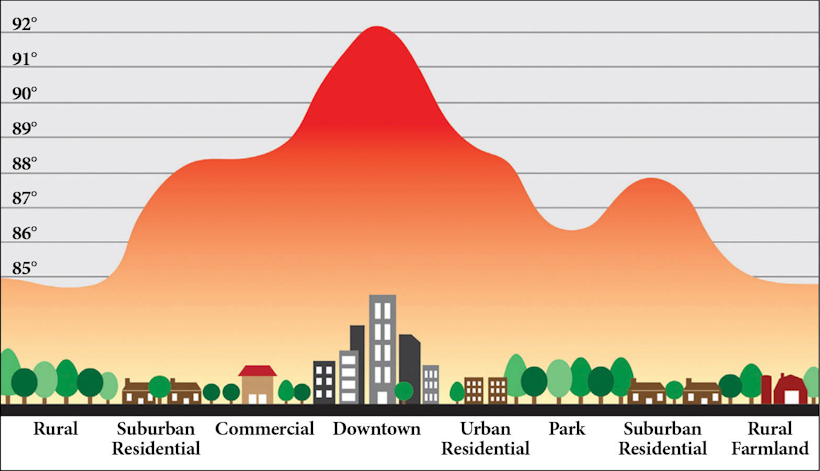
You’d be interested to know that research using a very similar module to the Viritopia Living Wall module found that a living wall can reduce the ambient air temperature by up to 8.7°C. This was conducted in the hotter, semi-arid climate of Iran so greater differences can be expected, but this finding still carries weight.
Vegetation prevents the temperature from rising by increasing the humidity of the environment on hot days. To start working towards limiting the global temperature rise to 1.5, as discussed at COP26, then we need to consider different methods of bringing nature into our cities.
Protecting human and nature populations
This was one of the 4 main talking points at COP26. Here's what the UN COP26 website says:
“There is no pathway to net-zero without protecting and restoring nature...we are encouraging countries to include nature-based solutions in their climate plans.”
Visit one of our projects, and you’re likely to find bees and butterflies enjoying plants, birds nesting in the wall, and look a little closer, insects making their home in the soil. When designed with the right substrate and plant species, green walls can go from just pretty features to providing valuable ecological habitats and food sources for local wildlife.
Here's a project where we noticed the bees making themselves at home in the wall within a week of installation:
For our health, good air quality is key. This forms a part of COP26s message: protecting human populations. But did you know that soil and plants actively purify the air? Select the right plants (certain species have better air purification properties) and you can create a green wall that has real benefits for the air quality of the space.
In fact, just 1m² of vegetation traps 130g dust and generates 1.7kg of oxygen every year.
Is your living wall just a cosmetic solution? Here’s how to make sure it’s not.
So we’ve talked about how to spot a green wall that is just a greenwashing exercise, but what can you do to ensure your wall is not simply a cosmetic solution? How can you be sure it’s addressing the issues and meeting the purpose?
The first thing we’d advise on is working with a partner that has experience in designing green walls for a specific reason, for example to improve air quality. Horticultural and ecological knowledge is key. A holistic approach should be taken with design, bringing together the relevant teams to ensure that your green wall is not only designed for the purpose, but also installed and managed right.
If you’d like to discuss a project or have a few concerns about a current green wall project, feel free to reach out to us. Drop an email to enquiries@ans.global or give us a call on +44 1243 545818.
To give you some background on what our place is, we’re here to give you a ‘one-stop shop’, where all the expertise you need for every stage is in one place. Landscape architecture, horticulture, project management and technical expertise - together our team has what you need to turn an idea into reality.
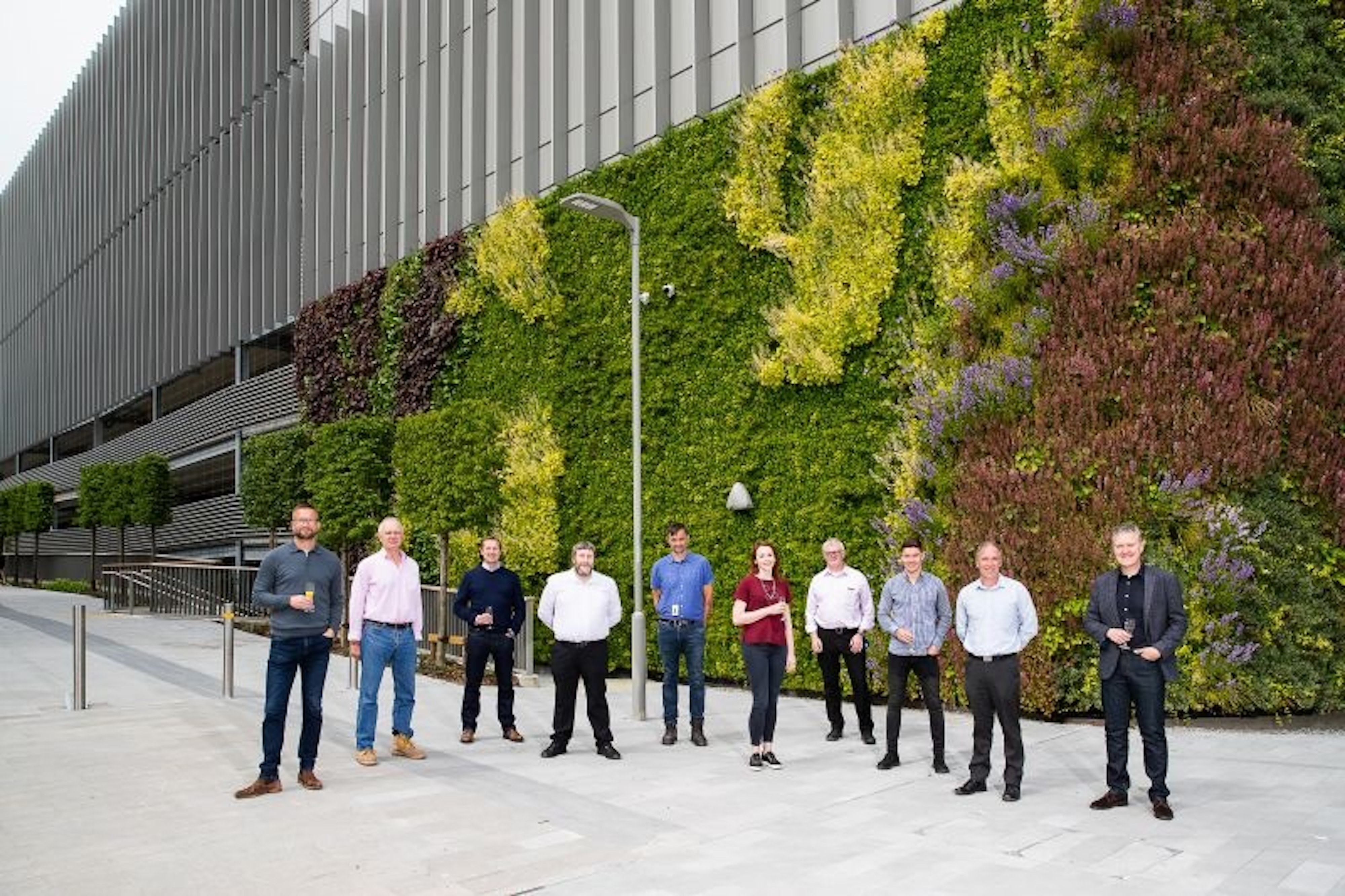
_bqezh.jpg?w=580&h=580&q=90&auto=format&fit=crop&crop=edges,focalpoint&fm=png)
